Is Your Raw Meat Dog Food Diet Causing Diarrhea? We Have Solutions
Raw Meat Dog Food Diet By Dr. Charles B.Hardy | Last Updated 10-04-2022
It’s common knowledge that canned and dry food can cause diarrhea and constipation but can this happen with a raw diet?
The simple answer is yes, and it is essential to figure out if a dog’s loose stool is caused by digestive upset or is caused by some kind of ailment.
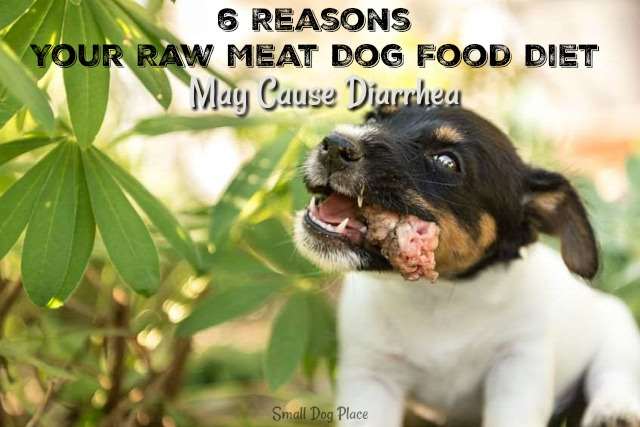 Is the diet your dog craves giving him diarrhea?
Is the diet your dog craves giving him diarrhea?Most owners transition their dogs onto a raw meat dog food diet to put a stop on frequent loose stools and stomach upsets.
Still, when feeding raw sometimes, it can be hard to combine the right amounts of meat, bone, and organs which result in diarrhea.
We found 6 reasons your dog who loves raw food is still suffers from diarrhea to help you put a stop on those nasty loose stools. Be aware that reasons listed here can improve the condition of a healthy dog.
If your dog is experiencing explosive diarrhea and vomiting for more than 24 hours, you will have to take him to the vet.
Most Common Causes of Diarrhea on the Raw Meat Dog Food Diet
If you have a completely healthy pooch and he still experiences diarrhea while on a raw meat dog food diet consider tweaking it a bit.
These are the most common reasons why a dog has a digestive upset.
A Raw Meat Dog Food Diet Too High In Fat Content
Not all prey meats have the same fat content and feeding your dog with fattier meats can cause diarrhea.
This happens because the liver must intensify its bile production and the gallbladder will release much of its stored bile for fat breakdown and absorption.
Some of the fattier meats include raw lamb, duck, and beef. Dogs that have frequent loose stools should eat low-fat dog food.
So, keeping this in mind, you should feed your dog only moderately fatty meats to provide easier digestion.
On the other hand, raw rabbit meat, raw chicken, and turkey bests are low in fat and won’t cause diarrhea.
Besides being low in fat, white meat is also low in taurine, an amino acid that is involved in the metabolism of fats.
So, not all preys are created equally, and not all types of meat provide the same nutritional value to your dog. Thus, it is vital to offer a variety of meat sources while feeding your dog raw.
We recommend that you stick with the meat that your dog would most likely encounter and eat in the wild.
If you are feeding your dog too much, high cholesterol meats, exclude them for the time being and give him only lean meat until his stool is back to normal.
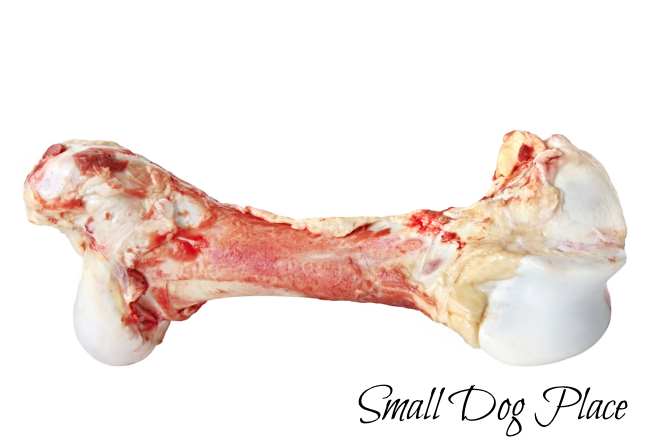
Imbalance Of Bone/Meat Ratio
Frankenprey is a raw feeding technique that tries to approximate the whole prey your dog will eat in the wild.
Since feeding your dog with an entire prey is in most cases impossible. This method tries to create a balanced meal out of parts that are obtained separately.
According to this approach, your dog should eat 80% of raw meat, 10% bones, 5% liver, and 5% of secreting organs. Too much organ meat like liver will cause diarrhea.
On the other hand, too much raw bones will cause constipation. So you should lower the amounts of raw organs your dog is eating and increase the number of bones.
This will result in regular stools and to keep them that way, stick to the recommended amounts of raw prey parts.
Furthermore, raw organs are high in phosphorus, and raw bones are high in calcium.
The calcium-phosphorus ratio should always be balanced to keep your dog’s bones and joints healthy and well-formed.
This is the part most raw feeding owners struggle with, so it is essential to figure the right amounts of bones and organs.
Besides stopping diarrhea, the correct amounts of calcium and phosphorus will prevent the development of hip dysplasia.
If you’re just starting out and not sure how to make a balanced meal, you can find try to find nutritious frozen meat online that is a biologically appropriate raw food (BARF) diet for dogs.
Short Transitioning Period: From Your Current Food to a Raw Meat Dog Food Diet
Most owners make a mistake transitioning their pup too fast onto a raw diet.
We know how exciting it is to offer your dog a healthier and for some the only real nutrition but doing it too quickly can cause digestive upset and diarrhea.
This happens because your dog is gotten used to digesting canned and dry food that is full of fillers and additives.
So, once he is introduced to raw meat and organs that require different enzymes for digestion, his stomach struggles.
So to get your pup used to his new type of diet you need to introduce it gradually over a period of 10 to 14 days. In no way, you should throw away kibble or canned food and fill your pup’s bowl with raw meat, organs, and bones right away.
Start slowly with only 10% of raw meat dog food diet incorporated with his previous food and go from there. It is not uncommon for dogs to also experience diarrhea during the transition period.
This just means that your dog’s digestive system is so unaccustomed to digesting his ancestral diet and that will take more time for him to acclimate.
Monitor your dog and transition him onto a raw diet until you notice that he has regular, smaller, and healthy looking stools.
If you are wondering how much raw food you should feed to your dog, the right amount for the transition period is a ½ pound of food per 25 lbs of body weight.
Once your dog is accustomed to his new raw meat dog food diet, you can adjust the amount of food according to his age and activity level.
How often you should feed your dog depends on your daily schedule, but try to stick with two meals. Smaller meals mean easier digestion thus lowering the possibility of loose stools.
What is the Variety Of Meat Proteins in Your Raw Meat Dog Food Diet?
Just like some meats contain more cholesterol than others, meats can have easily digestible proteins, while others do not.
Proteins from sardines, pigs intestines, and even raw eggs are hard to digest and cause explosive diarrhea.
Furthermore, pasteurized cow’s milk shouldn’t be fed to dogs, since it contains degrading enzymes that aren’t familiar with your dog’s digestive system.
And if you are mixing a variety of protein sources together into one meal, your pup is doomed to have diarrhea.
You should stick to easily digestible proteins like chicken and turkey meat that won’t cause digestive problems and are also low in fat.
Try to stay with this protein sources during the transition period and make them the foundation of your dog’s diet.
Later you can mix them with fattier meats like beef or lamb, but remember that moderation is the key to preventing diarrhea.
If you think that your pup will not experience digestive problems you can experiment with more exotic meat proteins later on.
Are You Including Probiotics And Enzymes in Your Raw Meat Dog Food Diet?
Enzymes and probiotics are present in your dog’s body and help break down food and make it easier to digest.
In some cases, this can lead to digestive problems early on during the transition period but can also happen long after your pup is transitioned to a raw diet.
Lack of probiotics lead to diarrhea and stomach problems but is luckily easily fixable.
Although, a raw meat dog food diet contains natural enzymes and probiotics in some cases your pup might need an extra boost.
For example, raw prey pancreases are full of enzymes that will help with better digestion and get your dog’s stool in order.
The best way to prevent probiotic and enzyme deficiency is to make sure that your dog gets balanced meals with the proper amount of meat, organs, and bones.
You can also give your pup enzyme and probiotic supplementation, and try to choose a natural product that is designed for dogs especially.
If it comes to this, you can consult with your vet since he is best acquainted with your dog’s medical history.
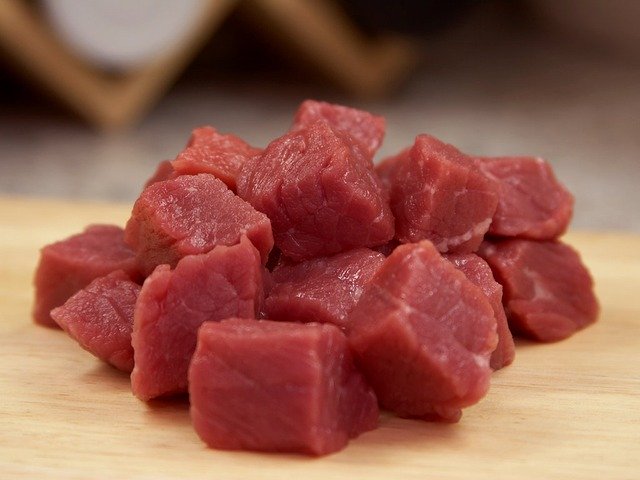 Is the Food You Are Using in Your Raw Meat Dog Food Diet Fresh?
Is the Food You Are Using in Your Raw Meat Dog Food Diet Fresh?Does Your Raw meat Dog Food Diet Contain Spoiled Food?
Owners that feed their dogs exclusively with a raw meat dog food diet have experienced food poisoning at least once. This isn’t so uncommon as you might think, since after all your dog is eating raw food.
Food poisoning can cause diarrhea, vomiting, or constipation, so it is essential to inspect the food you are going to give to your dog.
If the meat has a funky smell, weird texture or discolored parts, it is best to throw it away and not risk your dog’s health.
One more way that meat gets spoiled is by improper handling, so it is vital to wash your hands before touching the meat.
You should also keep your dog’s food fresh in the refrigerator or a freezer if you have a large quantity, and never unfreeze and refreeze the same meat again.
If your dog experiences vomiting or diarrhea more than 3 times in one hour, you should take him to the vet to be checked out immediately.
If it’s only 1 or 2 times in an hour and then stops, offer your dog plenty of water and don’t give him any food in the next 12 hours.
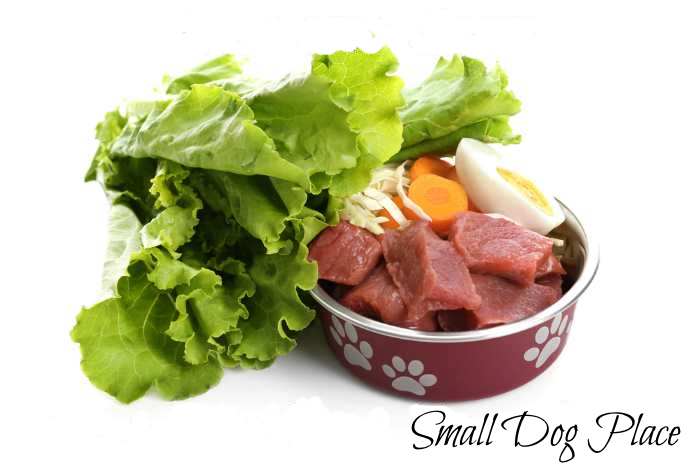
Conclusion
A raw diet is the ancestral diet of dogs and for many
owners, the only authentic food a dog
should eat.
There are numerous ways raw
food improves your dog’s health, and one
of them is regular, odorless, and compact stools.
Still in some cases feeding your dog raw can cause diarrhea.
To help you figure out the exact cause,
we listed 6 reasons why your raw eating
dog still suffers from diarrhea.
Most owners struggle to find
the right balance between meat, bone, and organs which lead to explosive
diarrhea.
So take special care in making your dog’s meals well-balanced and
full of easily digestible protein sources.
Author Bio: Dr. Charles B.Hardy
Founder of Pawpawlover.com
An original vet with tremendous love for the dog and an owner of a little Golden Retriever. He aspires to share his experience with anyone who cares about dogs.
Other Diet Related Articles You Might Enjoy:
A Raw Dog Food Diet for Your Small Breed Dog
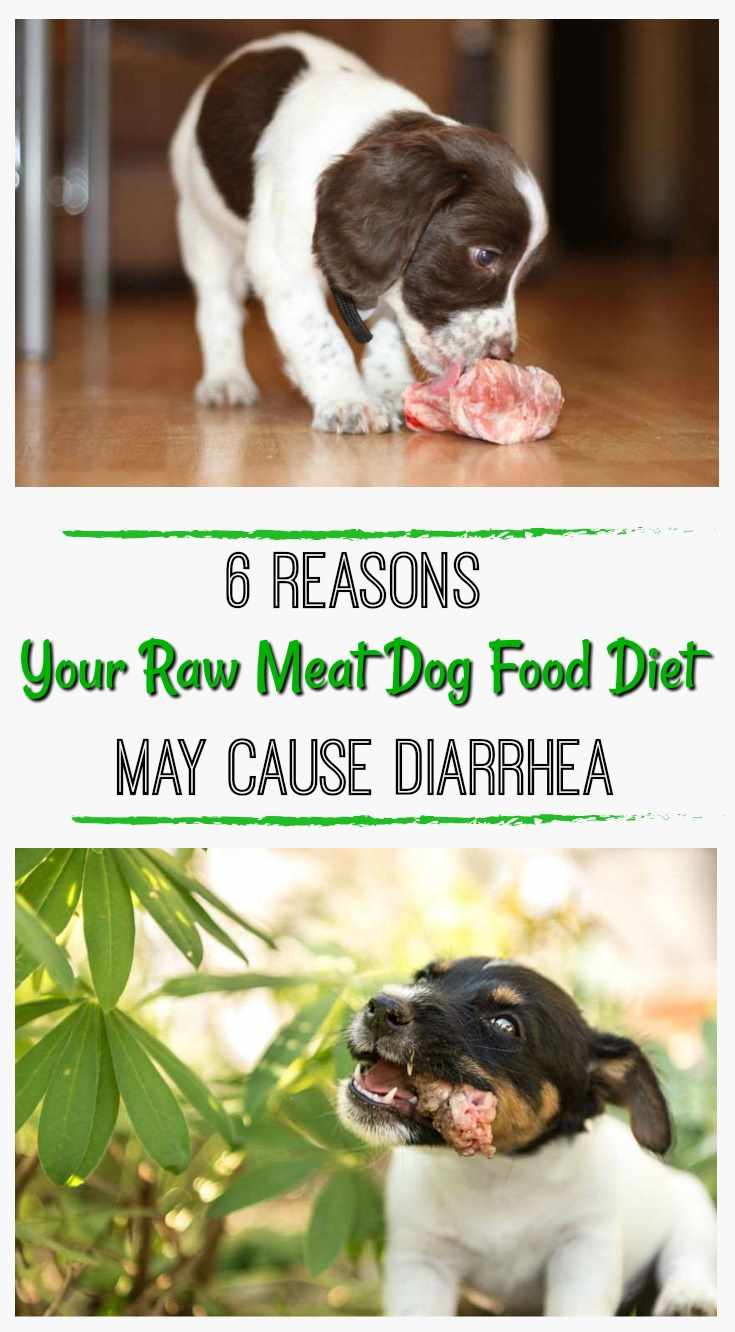 6 Reasons Your Raw Meat Dog Food Diet May Cause Diarrhea Pin
6 Reasons Your Raw Meat Dog Food Diet May Cause Diarrhea PinDoes This Article Deserve Your Thumbs Up?
We always appreciate your support and encouragement. Your thumbs up means so much to us. Please like this article.
If you find this page or any page on Small Dog Place Helpful, or Useful in anyway, I’d love it if you would click the small heart found on the bottom right of each page.
You can also share or bookmark this page — just click on the:

Free Monthly Newsletter
Sign Up for Our Free Newsletter and get our Free Gift to You.
my E-book, The Top 10 Mistakes People Make When Choosing a Dog (and how to avoid them)




